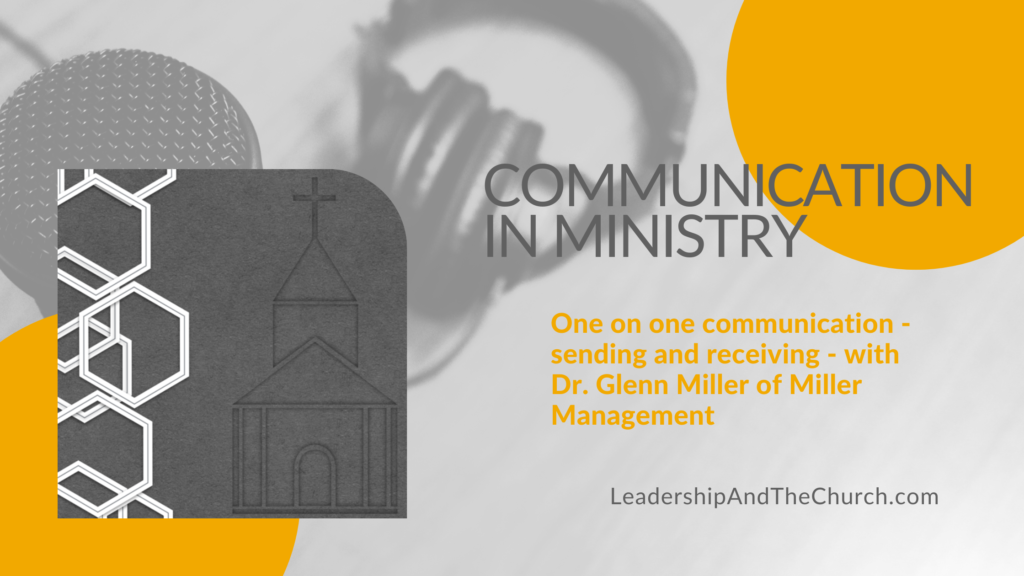Chris Miller, President of Miller Management, is the host of this week’s episode. He is joined by his colleage, Dr. Glenn Miller, CEO of Miller Management.

Communicating is the essence of leadership. No leader is effective if he or she can’t communicate – quote from the Marine Corps manual.
The first episode in this series will discuss one on one communication. Next up will be group to group communications. Thirdly will be communication at the organization level. The fourth week will discuss how meetings can effectively move your organization forward.
Communicating is an art
Patrick Townsend says it is possible to reach a position of power and still be communication impaired; while it’s also possible to be an effective communicator and not reach a higher level of leadership.
Did you know that 80% of our work hours are spent communicating, and 50% of that time is listening? Communication is both an art and science. While we listen the most, speak next, read less, and write the least amount of time; our education system is usually in the opposite order of writing most and listening last. Because of our training, everyone can find an area of improvement in communication, whether in ministry, work, or at home.
Poor communication can result in many negative things, from the task not being completed, to low morale in the company. When you think about the most difficult challenge you’ve had this week – we’ll bet that most of the time the root cause will be because of a lack of communication.
Major Causes of Breakdown
Some causes of breakdown occur when the communicator has low EQ, low sending or receiving skills, or is too self-focused or controlling. Lack of understanding or lack of respect or distrust are also pretty common breakdowns.
Another big breakdown is using the wrong form of communication. We type a message instead of having the conversation face to face. We all know we can misinterpret (or be misinterpreted) in our written communication – so know when your form of communication isn’t right for the situation.
Improving One on One Communications
There are a few ways to communicate. The first being the 50/50 rule: we expect our part to be enough. 50% is sending while 50% is receiving – meeting in the middle with perfect communication. But if someone only goes 48% of the way there, the success zone shrinks. We can create a larger success zone by going the extra mile – take our communication 60-70% of the way there.
To keep the culture of going the extra mile in communication, you need to regularly create dialogue. We have four steps for both the communicator and the receiver next.
As the communicator, begin positively. Start with something that is going well – this shows that you noticed, but it must be genuine and specific. Next move into cause and effect. Create a time for two-way dialogue. Lastly, generate ideas and solutions together.
On the receiving end: focus on the message, not the messenger. Next, listen calmly and attentively. In the two-way section, clarify feedback without being defensive. Lastly, ask questions or give suggestions.
Coming Up
When communication is done poorly, it creates problems. With that in mind, we all should all try these steps to be better communicators and receivers. Next week we continue our one on one communication disussion.
Join the conversation, see behind the scenes, and learn more on our Instagram and X pages.
Special thanks to our guest, Dr. Glenn Miller, and our masters of all things Podcasting, Chris and Lauren Miller, for this first episode in our Communication in Ministry series.
